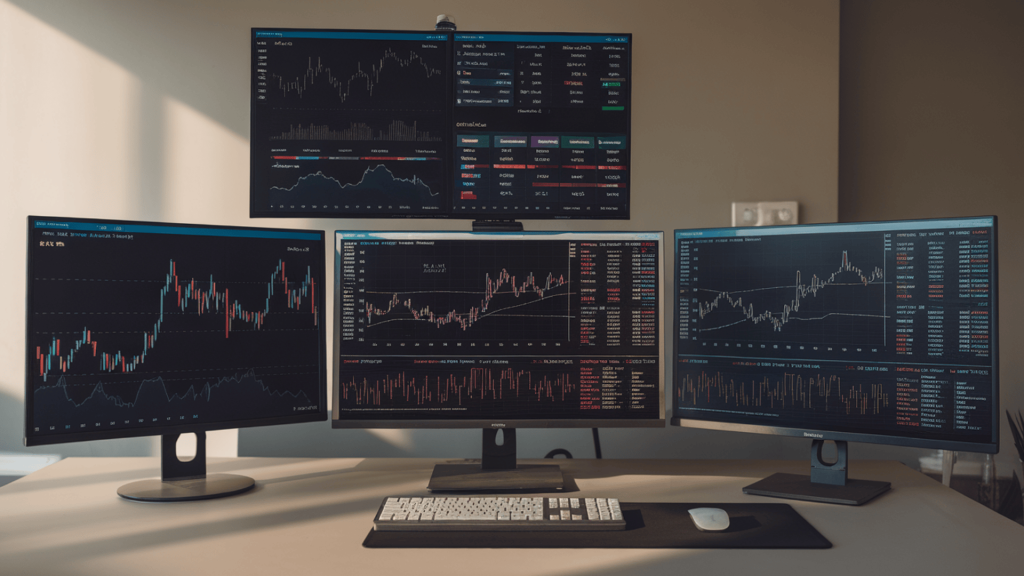Margin trading is a method that allows investors to buy more securities than they could with their own funds alone by borrowing money from a broker. This approach increases an investor’s buying power, enabling larger trades and the potential for higher profits.
However, it also amplifies risk, as losses can exceed the initial investment if the market moves unfavorably.
How Does Margin Trading Work?
To engage in margin trading, an investor must open a margin account with a broker, which is separate from a standard cash account. The investor deposits an initial margin, typically a percentage of the total trade value, while the broker lends the remaining amount.
The purchased securities serve as collateral for the loan. If the value of the securities drops below a certain threshold (maintenance margin), the broker may issue a margin call, requiring the investor to deposit additional funds or sell assets to cover the shortfall.
Interest is charged on the borrowed amount, and positions can be carried forward for a limited period, depending on the broker’s terms.
Core Concepts Behind Margin Trading
To fully understand margin trading, it’s important to get familiar with the foundational terms and mechanisms that govern how it works. These core concepts help explain both the opportunities and risks that come with using borrowed capital in trading.
- Leverage: Using borrowed funds to increase potential returns (and risks).
- Initial Margin: The minimum amount an investor must deposit to open a margin position.
- Maintenance Margin: The minimum account balance required to keep a margin position open.
- Margin Call: A broker’s demand for additional funds when the account value falls below the maintenance margin.
- Collateral: Securities or cash pledged to secure the borrowed funds.
- Interest Costs: Ongoing charges on borrowed amounts, impacting overall profitability.
- Amplified Gains and Losses: Both profits and losses are magnified due to leverage.
These principles shape the structure of margin trading and define what traders need to manage to succeed with leveraged positions.
Types of Margin Accounts
Margin accounts are not one-size-fits-all. Depending on the trader’s experience, trading volume, and financial goals, brokers offer different account types with unique requirements and benefits.
Standard Margin Account
This is the most common type, allowing investors to borrow money from the broker to buy securities. The investor’s cash and eligible securities serve as collateral.
Standard margin accounts are used for buying stocks, options, and sometimes short selling.
Pattern Day Trader Margin Account
For those who execute four or more day trades within five business days, U.S. regulations require a minimum balance (typically $25,000) and grant increased leverage.
These accounts are designed for active traders and carry stricter requirements.
Portfolio Margin Account
Aimed at sophisticated investors, portfolio margin accounts use the overall risk of the portfolio to determine margin requirements, potentially allowing for greater leverage compared to standard margin accounts.
These accounts are typically available to high-net-worth or institutional clients.
Choosing the right type of margin account depends on your trading habits, risk appetite, and the level of capital you’re working with.
Benefits of Margin Trading
Margin trading offers the ability to amplify returns by increasing purchasing power. Investors can take larger positions, diversify their portfolios, and potentially generate higher profits from small market movements.
Margin trading is particularly attractive for those seeking to capitalize on short-term opportunities without tying up all their capital. Additionally, it offers flexibility in trading strategies, such as going long or short on various securities.
Risks and Drawbacks of Margin Trading
While margin trading can boost profits, it also significantly increases risk. Losses are magnified, and investors may lose more than their initial investment. Interest costs on borrowed funds can erode profits, especially if positions are held for extended periods.
Margin calls may force investors to deposit additional funds or liquidate assets at a loss. If the market moves sharply against a leveraged position, the broker may sell securities without the investor’s consent, potentially resulting in substantial financial harm.
Tips for Beginners in Margin Trading
If you’re new to margin trading, it’s critical to build a solid foundation and proceed with caution. These beginner-friendly tips can help reduce risk and guide your early steps in leveraged trading.
- Educate yourself thoroughly about margin trading concepts and risks.
- Start with small positions to limit potential losses.
- Use stop-loss orders to manage risk and protect your investments.
- Monitor your portfolio regularly and stay informed about market conditions.
- Maintain discipline and avoid emotional or impulsive trades.
- Understand all margin requirements and interest costs before trading.
- Only use leverage that matches your risk tolerance and financial situation.
Following these practices can help create a safer and more informed trading experience as you grow your skills in margin-based strategies.
Margin Trading vs Other Trading Methods
To better understand where margin trading fits in the broader world of investment strategies, here’s a comparison with cash and futures trading. This table highlights key differences in risk, funding, and flexibility.
| FEATURE | MARGIN TRADING | CASH/SPOT TRADING | FUTURES TRADING |
|---|---|---|---|
| Funds Used | Borrowed + Own Capital | Own Capital Only | Margin/Collateral for Contract |
| Leverage | Yes (amplifies gains/losses) | No | Yes (often higher than margin trading) |
| Risk Level | High (can lose more than invested) | Lower (loss limited to the invested amount) | High (contractual obligations) |
| Interest Costs | Yes (on borrowed funds) | No | No (but may have margin requirements) |
| Margin Calls | Yes | No | Yes |
| Ownership | Partial (until loan repaid) | Full (immediate ownership) | No (contractual rights/obligations) |
| Trading Flexibility | High (can go long or short) | Moderate (buy and hold) | High (long/short, hedging, speculation) |
| Complexity | Moderate to High | Low | High |
Conclusion
Margin trading enables investors to leverage their capital for potentially higher returns, but it comes with substantial risks, including the possibility of losing more than the initial investment.
Understanding the mechanics, risks, and requirements of margin accounts is essential before engaging in margin trading. Beginners should approach with caution, prioritize education, and implement robust risk management strategies to navigate this high-stakes trading method effectively.
Frequently Asked Questions
How Does Margin Trading Amplify Both Gains And Losses For Investors?
Margin trading uses borrowed money to boost your buying power. This means gains are larger when prices rise, but losses also grow faster if prices fall, making it a high-risk, high-reward strategy.
How Can I Effectively Manage Risks Like Margin Calls And Liquidation Risks?
To manage risks, monitor your account closely, use stop-loss orders, and avoid overborrowing. Keeping extra funds and knowing your broker’s rules helps prevent forced liquidation.
What Are The Main Benefits Of Using Margin Trading To Increase Market Exposure?
Margin trading lets you control bigger positions, diversify more, and react quickly to market moves. It can boost profits if used wisely and with proper risk control.


